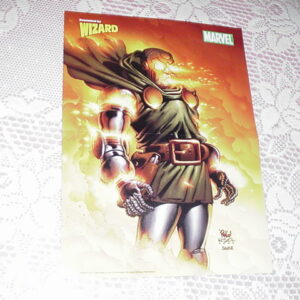Description
In 1947, Joe Simon and Jack Kirby kicked off the romance comics craze with the publication of Young Romance for Prize Comics. Sales quickly approached one million copies a month and inspired numerous imitators, including DC’s own Girls’ Love Stories, launched in 1949. Young Romance and its companion title, Young Love, would eventually wind up in the DC stable as well, as did Quality Comics’ Heart Throbs, Secret Hearts and Falling in Love, which debuted in 1949 and 1955 respectively, rounded out what must have been a bewildering array of options for the DC romance reader of the 1960s. The books’ formulaic plots centered around weepy, self-loathing female protagonists, the inscrutable dreamboats they pine for and the inevitable complications caused by parents, romantic rivals and totally avoidable misunderstandings. (This issue of Falling in Love concerns a lifeguard with a mysterious ex-girlfriend.) Running in between stories were horoscopes and letter columns offering advice to the loveless, with titles like “Julia Roberts, Romance Counselor,” “To You from Carol Andrews,” and “Ann Martin Counselor-At-Love.” Ads were aimed exclusively at young females as well, including pitches for charms of your kitten or sweetheart, hatboxes, glamorous “10-way hairpieces,” and a “100% virgin wool cheerleader’s sweater.” John V. Romita, Sr. (often known as simply John Romita) (born January 24, 1930) is an American comic-book artist best known for his work on Marvel Comics’ The Amazing Spider-Man. He was inducted into the Will Eisner Comic Book Hall of Fame in 2002. In the mid-1950s, while continuing to freelance for Atlas, Romita did uncredited work for DC Comics before transitioning to work for DC exclusively in 1958. His first known work for the company is the tentatively identified penciling credit for the cover of Secret Hearts 58 (Oct. 1959), and, confirmably, pencils for the seven-page story “I Know My Love”, inked by Bernard Sachs, in Heart Throbs #63 (Jan. 1960). Other titles to which he contributed include Falling in Love, Girls’ Love Stories, Girls’ Romances, and Young Love. “I was following the DC [house] style”, he recalled in 2002. “Frequently they had another artist do the first page of my stories. Eventually I became their romance cover artist”. He would “swipe” — an artists’ term for using existing work as models, a common practice among novices — from movie stills and from the Milton Caniff comic strip Terry and the Pirates. Bernard Sachs and Sy Barry inked some of Romita’s romance work, but “by the late ’50s and early ’60s, I was inking my own stuff”. Shortly afterward, however, romance comics began declining in popularity, and by 1965, DC had “stopped buying any new [romance] art”, Romita recalled.
Related products
-


Iron Man Poster # 5 by Kev Walker Iron Doom Exiles 23 Cover
$29.99 Add to cart -


Wolverine Poster #16 vs The Hand The End by David Finch Ninjas
$39.99 Add to cart -


Doctor Doom Poster # 3 Triumphant by Mike Wieringo Fantastic Four 67
$34.99 Add to cart -


Elektra Poster # 2 by Rodolfo Migliari Daredevil Thunderbolts
$29.99 Add to cart


